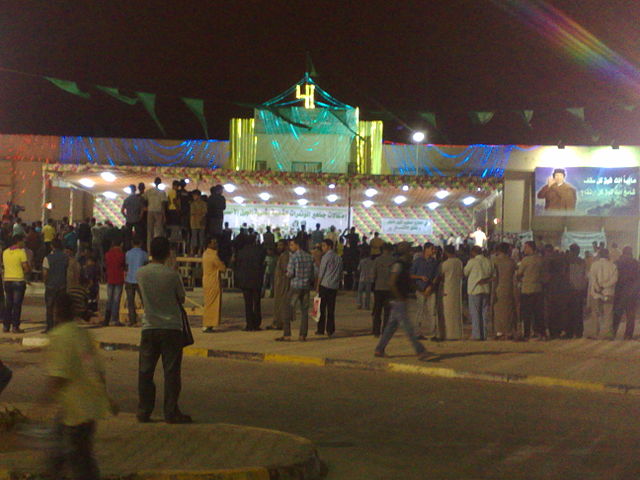Foreign relations of Libya under Muammar Gaddafi
The foreign relations of Libya under Muammar Gaddafi (1969–2011) underwent much fluctuation and change. They were marked by severe tension with the West and by other national policies in the Middle East and Africa, including the Libyan government's financial and military support for numerous paramilitary and rebel groups.
Colonel Gaddafi (left) with Egyptian President Gamal Abdel Nasser in 1969. Gaddafi moved Libya away from the West and sought Pan-Arabism and Pan-Africanism.
Libyan People's Bureau (Embassy) in London, Knightsbridge, 2008
Gaddafi with then-President of Russia Vladimir Putin in 2008
U.S. Secretary of State Hillary Clinton with Libyan National Security Adviser Mutassim Gaddafi in 2009
History of Libya under Muammar Gaddafi
Muammar Gaddafi became the de facto leader of Libya on 1 September 1969 after leading a group of young Libyan Army officers against King Idris I in a bloodless coup d'état. After the king had fled the country, the Revolutionary Command Council (RCC) headed by Gaddafi abolished the monarchy and the old constitution and established the Libyan Arab Republic, with the motto "freedom, socialism and unity". The name of Libya was changed several times during Gaddafi's tenure as leader. From 1969 to 1977, the name was the Libyan Arab Republic. In 1977, the name was changed to Socialist People's Libyan Arab Jamahiriya. Jamahiriya was a term coined by Gaddafi, usually translated as "state of the masses". The country was renamed again in 1986 as the Great Socialist People's Libyan Arab Jamahiriya, after the United States bombing that year.
Gaddafi at the African Union Summit, Addis Ababa, 2 February 2009
Gaddafi (left) with Egyptian President Gamal Abdel Nasser in 1969
Alfateh Festivity in Bayda, Libya, on 1 September 2010.






